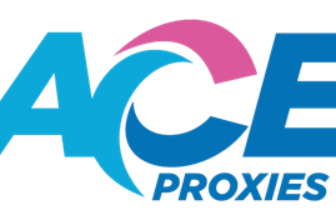
High Speed Internet With T3 Internet Service
[ad_1]
T3 Internet connection or ‘Trunk Level 3’ is capable of transmitting data up to 44.7 million bits per second (mbps) through an extremely high bandwidth equivalent to about 672 regular voice-grade phone lines. T3 connection, by copper, is similar in technology to a T1, but it has greater bandwidth through which it can transfer data to and from Internet at a higher speed. A full T3 or DS3 line is equivalent to 28 T1 lines in terms of data transfer per unit time but it has to be customized accordingly to gain optimal benefit. A T3 circuit can also be by fiber and that is how most DS3 circuits are these days. A fractional T3 Internet service is ideal for customers who need data transfer more than 6 mbps (ideally at 10 mbps or more) and less than the full 45 mbps of the T3 internet line. The reason for that is the local loop for the T3 circuit, is more costly and financially, it does not make sense to get a fractional DS3 for less than 6 mbps. A T3 line is used as a major networking pathway by companies that use lots of bandwidth, big business organizations, and universities with high-volume network data transfer, large corporations, and government organizations.
Like ‘Trunk Level 1’ Internet connection, T3 lines are often called DS3 lines (Digital Signal Level 3), which are made up of two components – the primary or local loop and the port. Primary or Local T3 loops are more expensive than T1 loops because they allow more amounts of data transferred due to its larger bandwidth capacity. A T3 line comprises of 672 individual channels and each of them can carry 64 Kbps. T3 service is also termed ‘Digital Transmission Level 3’, because it can transmit any combination of data of audio and visual applications. In fact, a T3 circuit is a specific term that transmits data at 64 kbps in each of its 672 channels while DS3 is a generic term that encompasses circuits with the same bandwidth. Both T3 and DS3 lines have the potential to carry 672x 64 Kbps or 44.7 million bits per second (mbps).
A T1 line is used by small and medium-sized companies and it is capable of transmitting text files, graphics, sounds, and database instantly; whereas a T3 line is appropriate for big workforce where larger volumes of data can be transmitted including video and audio files. In case of the T1 service, it will take more time than a T3 connection in transferring audio and video files. Through ordinary residential modem or telephone line it is not possible to transmit both audio and visual data simultaneously. To send or receive any kind of large or constant audio-visual files in undistorted form, you have to rely on T3 Internet service, which provides reliable, uninterrupted, hassle free, and high-speed huge amount of data transfer.
T3 technology has two applications in wide use in corporate networking – as Internet link and as a means of aggregating multiple T1 lines into one physical access point. The first application acts as a single channel between two points of Web server and the Internet. The second application is a canalized system, which works just like a combination of T1 lines. The third application, which is less common than the other two, is used to interface a T3 Internet directly to a far-off access controller. And this application helps to continue 672 simultaneous dial-up connections via one physical link. The problem with copper based point-to-point T3 lines is that it does not work with optical interfaces, unlike a fiber based T3/DS3 circuit.
To connect a large office of individuals to the public Internet, it is better to use a T3 line or DS3 (Digital Signal Level 3) connection instead of other bandwidth services. T3 providers satisfy customers, who have multiple T1 lines needs or are in need of a large Internet connection to transfer huge amount of data by providing T3 connection. By using multiple T1 lines, you can get speed and large amount of data transfer and it’s more cost effective than a T3 line usually, but you can not easily upgrade to a DS3 connection. Fractional T3 or DS3 connection is also available which is not only cheaper than multiple T1 service per megabits, but also ensures larger amount of data transfer at a higher speed. As T3 connection consumes less time to send data through the Internet and VPN (Virtual Private Network), it reduces telecommunication costs considerably and increases productivity in a company as well.
T3 lines are used mainly by Internet Service Providers (ISPs) who connect their customers to the Internet – Local Area network and Wide Area Network. By implementing a T3 service with the latest technological know-how, theT3 provider has brought a revolution in Internet telecommunication and eased the way for point-to-point data transfer.
[ad_2]
Source by Alan Nguyen



